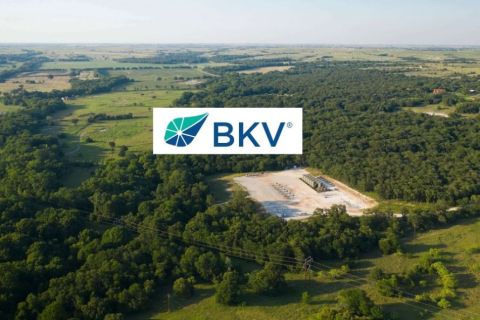
The price of the hypothetical NGL barrel (bbl) at Mont Belvieu, Texas, is at its highest level in almost two months and 14.3% above its price at this time a year ago. At the Conway, Kan., hub, the barrel price is 13.1% higher than 12 months ago.
Yet the industry continues to pump the pedals of a downcycle, with commodity prices unable to acquire any sustainable momentum.
 If this seems fundamentally wrong, it’s because the market fundamentals have changed, Rusty Braziel, president and CEO of RBN Energy LLC, wrote in a recent research note. Prior to 2009, he wrote, the prices of crude oil, natural gas and NGL had a tendency to move in tandem.
If this seems fundamentally wrong, it’s because the market fundamentals have changed, Rusty Braziel, president and CEO of RBN Energy LLC, wrote in a recent research note. Prior to 2009, he wrote, the prices of crude oil, natural gas and NGL had a tendency to move in tandem.
Then the impact of the shale revolution began to be felt, with emphasis on revolution.
“When gas prices crashed, producers went to NGL,” Braziel wrote. “When NGL prices crashed, they went to crude. After crude prices crashed, there was nowhere left to go. Now all the prices are low, and producers have to deal with the situation, rather than moving off to the next commodity market.”
In this strange Shale 2.0 era, producers have not only found ways to survive but to thrive with oil below $50/bbl and gas under $3 per million British thermal units.
Despite massive levels of rejection, the Mont Belvieu ethane price reached its highest level in seven weeks and Conway’s price, while down slightly from last week, was still 11.4% above last year at this time.
Propane rose to its highest price since mid-July at Mont Belvieu and since late July at Conway. Mont Belvieu’s price is 21.2% higher than it was a year ago and Conway’s is 14.5%.
 The opening of a wider, deeper lane of the Panama Canal should benefit U.S. propane producers the most, Jordan Frisby, economic analyst at the Port of Houston Authority, said on Aug. 31 at the “Transform Your Global Trade Management” event hosted by Thomson Reuters and Ernst & Young in Houston.
The opening of a wider, deeper lane of the Panama Canal should benefit U.S. propane producers the most, Jordan Frisby, economic analyst at the Port of Houston Authority, said on Aug. 31 at the “Transform Your Global Trade Management” event hosted by Thomson Reuters and Ernst & Young in Houston.
“The Panama Canal extension is not a cause of growth in [shipping], it is a reaction,” Frisby said. “Vessels are getting much, much larger very quickly.
“One area where we expect to see a lot of growth is in LPG export,” he said. “Houston is already an LPG export global hub. A huge amount of propane is getting produced and it’s just way too much for the country to consume so it’s going to go to export. There are some allied products that are similar.”
There was little week-to-week price movement for butane and isobutane, though both are substantially above last year’s levels at both hubs.
C5+, which had jumped 18.4% at Mont Belvieu and 22.8% at Conway, eased this week but remained above $1 per gallon (gal) at both hubs.
 Startup of Qatar Petroleum’s condensate-fed Laffan Refinery 2, which is expected to be fully operational in late September, has bolstered global prices for low-sulfur condensate. Though Platts reported that Asian end-users were caught by surprise by the one-month price increase, Asian producers of deodorized field condensate took advantage of the sudden reduction of supply on the market.
Startup of Qatar Petroleum’s condensate-fed Laffan Refinery 2, which is expected to be fully operational in late September, has bolstered global prices for low-sulfur condensate. Though Platts reported that Asian end-users were caught by surprise by the one-month price increase, Asian producers of deodorized field condensate took advantage of the sudden reduction of supply on the market.
The U.S. Energy Information Administration (EIA) reported an increase of 51 billion cubic feet (Bcf) for the week ending Aug. 26, above the Bloomberg consensus prediction of 43 Bcf, to a total of 3.401 Tcf. That is 7.5% above the total of 3.163 Tcf one year ago and 10.9% over the average of 3.067 Tcf for 2011-2015.
Joseph Markman can be reached at jmarkman@hartenergy.com and @JHMarkman.
Recommended Reading
Utica Oil E&P Infinity Natural Resources Latest to File for IPO
2024-10-05 - Utica Shale E&P Infinity Natural Resources has not yet set a price or disclosed the number of shares it intends to offer.
Woodside Reports Record Q3 Production, Narrows Guidance for 2024
2024-10-17 - Australia’s Woodside Energy reported record production of 577,000 boe/d in the third quarter of 2024, an 18% increase due to the start of the Sangomar project offshore Senegal. The Aussie company has narrowed its production guidance for 2024 as a result.
ConocoPhillips Hits Permian, Eagle Ford Records as Marathon Closing Nears
2024-11-01 - ConocoPhillips anticipates closing its $17.1 billion acquisition of Marathon Oil before year-end, adding assets in the Eagle Ford, the Bakken and the Permian Basin.
BKV Prices IPO at $270MM Nearly Two Years After First Filing
2024-09-25 - BKV Corp. priced its common shares at $18 each after and will begin trading on Sept. 26, about two years after the Denver company first filed for an IPO.
Exxon, Chevron Beat 3Q Estimates, Output Boosts Results
2024-11-01 - Oil giants Chevron and Exxon Mobil reported mixed results for the third quarter, with both companies surpassing Wall Street expectations despite facing different challenges.
Comments
Add new comment
This conversation is moderated according to Hart Energy community rules. Please read the rules before joining the discussion. If you’re experiencing any technical problems, please contact our customer care team.




